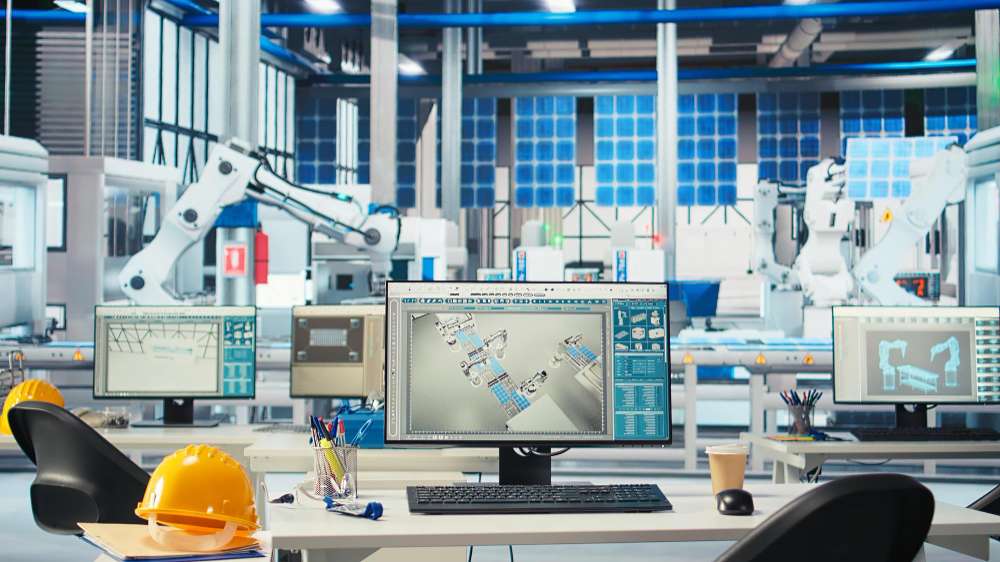
In recent years, artificial intelligence (AI) and machine learning (ML) have rapidly evolved from futuristic concepts to crucial components in various industries, including manufacturing. Read on to learn about the significant role AI and machine learning play in modern industrial robotics, their applications, and their transformative impact on manufacturing processes.
Improving Precision and Efficiency
One of the primary benefits of incorporating AI and machine learning into industrial robotics is the improvement of precision and efficiency. Traditional robots execute pre-programmed tasks with high accuracy, but their adaptability to dynamic environments is limited. AI and ML algorithms enable robots to learn from data, adapt to new conditions, and continuously improve performance.
Predictive Maintenance
Predictive maintenance is a critical application of AI in industrial robotics. By analyzing real-time data and historical performance metrics, AI algorithms can predict when a robot or machine component will likely fail. That allows for timely maintenance, reducing downtime and preventing costly unexpected breakdowns.
Quality Control
AI-powered vision systems enable robots to perform intricate quality control inspections. Machine learning algorithms can be trained to recognize defects and anomalies with high precision, making sure that products meet stringent quality standards. This reduces the reliance on human inspectors and improves overall product quality.
Driving Automation and Flexibility
AI and machine learning significantly improve the automation capabilities of industrial robots, making them more flexible and adaptable to varying tasks and environments.
Autonomous Learning
Through machine learning, robots can autonomously learn and improve from their interactions without explicit programming for each task. For example, robots can optimize their movements and processes in assembly lines, minimizing errors and increasing efficiency over time.
Improved Robotics Programming
Traditional robot programming can be time-consuming and requires specialized skills. However, AI and ML simplify this process. Machine learning techniques such as reinforcement learning allow robots to learn optimal actions through trial and error. That drastically reduces the time and expertise required for programming complex tasks.
Human-Robot Collaboration
AI enables more intuitive and safer human-robot interactions. Machine learning algorithms can predict human actions and adjust the robot’s behavior accordingly, creating strong collaboration. That is particularly beneficial for tasks requiring human creativity and robotic precision.
Key Applications of AI and Machine Learning in Industrial Robotics
Integrating AI and ML in industrial robotics spans a wide range of applications. Here are some notable examples:
- Automated Inspection and Sorting: AI-powered robots can inspect, sort, and classify products at high speeds, allowing for consistent quality and reducing manual labour.
- Adaptive Manufacturing Systems: AI enables robots to adapt to varying manufacturing requirements and reconfigure themselves for different production runs with minimal downtime.
- Supply Chain Optimization: AI algorithms analyze supply chain data to optimize inventory management, reduce lead times, and improve overall efficiency.
- Smart Warehousing: Machine learning improves robotic systems used in warehouses for picking, packing, and palletizing, increasing throughput and accuracy.
Challenges and Considerations
While the benefits of AI and machine learning in industrial robotics are substantial, there are challenges and considerations to address.
Data Quality and Quantity
The effectiveness of AI and ML algorithms depends on the quality and quantity of data available for training. Establishing accurate and detailed data collection is crucial for optimal robot performance.
Integration with Legacy Systems
Many manufacturing facilities still operate with legacy systems that may not be compatible with AI and ML technologies. Upgrading or integrating these systems can be challenging but necessary for leveraging advanced robotics’ full potential.
Cost and Expertise
Implementing AI and ML solutions involves significant upfront costs and requires specialized expertise for development and maintenance. However, the long-term benefits often justify the initial investments.
Future Prospects
The future of AI and machine learning in industrial robotics is promising. Advancements in technologies such as deep learning, neural networks, and edge computing will further expand the capabilities of industrial robots. These innovations will lead to:
- Increased Autonomy: Robots will become more autonomous, capable of making complex decisions and performing tasks with minimal human intervention.
- Improved Human-Robot Collaboration: Improved AI algorithms will facilitate more nuanced and safe interactions between humans and robots.
- Scalable Customization: AI-driven robots will offer scalable solutions tailored to specific industry needs, improving flexibility and efficiency.
AI and machine learning are revolutionizing modern industrial robotics by improving precision, efficiency, and adaptability. These technologies enable smarter automation, predictive maintenance, and great human-robot collaboration, driving the manufacturing industry towards a more innovative and productive future. As AI and ML continue to evolve, their integration with industrial robotics will undoubtedly redefine the capabilities and reach of manufacturing processes worldwide.
